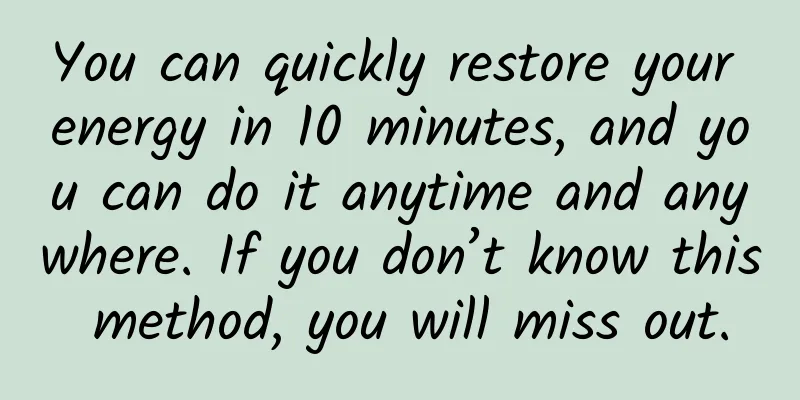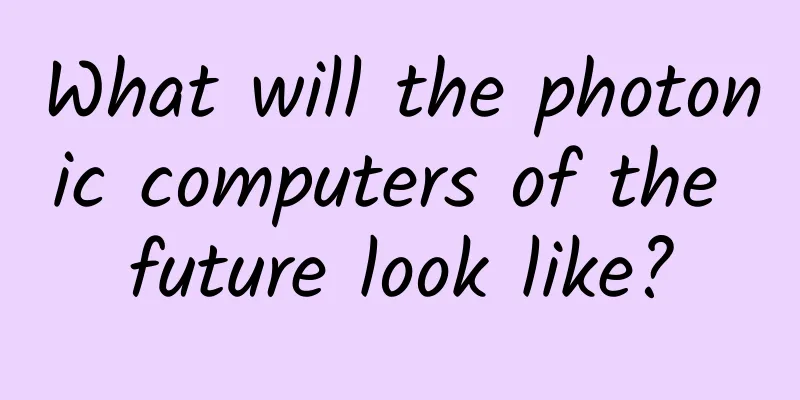You can quickly restore your energy in 10 minutes, and you can do it anytime and anywhere. If you don’t know this method, you will miss out.

|
If I don't take a nap, I'm afraid I'll be tired in the afternoon. If I take a nap, the lunch break is too short, and I don't get enough rest if I just take a short nap. I'm even more afraid that once I fall asleep, I'll oversleep, which will not only delay things, but also make me dizzy and nauseous if I sleep for too long. I believe many people have encountered this kind of trouble. Is there any way to allow people to have a good rest in a short period of time? It really exists! Professor Andrew Huberman, a professor of neurobiology at Stanford University, and his team have proposed a new solution: Non-Sleep Deep Rest (NSDP). This method does not require people to enter a deep sleep state, but it can allow your brain and body to get a good rest and recovery in 10 minutes ! Copyright images in the gallery. Reprinting and using them may lead to copyright disputes. What is NSDR? NSDR is a method of guiding your attention and body to relax, helping your brain enter a sleep-like state of rest, allowing your body and mind to relax properly. This practice is simple and easy to do in any quiet and comfortable place. Just follow these steps: 1. Preparation stage: Find a quiet, comfortable place where you can lie down or sit in a chair. 2. Relax your body: Close your eyes, take 3 to 4 deep breaths, and feel your body gradually relax. 3. Guide your attention: Play the NSDR guidance audio (there are many such audio and video platforms, which can be retrieved by searching the NSDR keyword), follow the guidance and gradually feel the relaxation of various parts of the body, from the soles of the feet to the head. 4. Imagination exercise: Imagine your body gradually sinking down, feeling the contact between your body and the chair or bed, and further relax your muscles. 5. End of the exercise: After the exercise, move your body slowly and gradually regain consciousness. This approach draws on techniques such as Yoga Nidra and Progressive Muscle Relaxation (PMR)[1], which have been widely studied and applied in clinical care, mental health, and cognitive function improvement[2-4]. How does NSDR help people quickly restore their energy in 10 minutes? NSDR can affect the body in three ways, allowing us to get enough rest in a short period of time. The most important of these is the directional induction of brain waves. Studies have shown that NSDR can help practitioners focus on body sensations and breathing, which can cause the brain to transition from beta waves to alpha waves and theta waves, achieving a relaxation effect similar to the light sleep stage[5]. At the same time, NSDR can inhibit the sympathetic nervous system, helping the body enter a state of relaxation[6], and can significantly reduce levels of stress hormones such as cortisol. This reduction in hormones not only helps reduce stress and anxiety, but also improves overall health[7]. In order to verify whether NSDR has real effects, researchers recruited 65 participants and randomly divided them into two groups. One group of participants completed 10 minutes of NSDR, while the other group just sat in meditation for 10 minutes without doing any specific relaxation exercises[8]. During the experiment, the researchers conducted multiple tests on both groups of participants before and after the intervention to assess their physical and cognitive performance, emotional state, and recovery. The results showed that the NSDR group performed significantly better than the control group in multiple tests. Their grip strength increased significantly, indicating that their muscle strength and physical readiness had improved. In the psychomotor vigilance task, the NSDR group's reaction time was significantly shortened, and their attention and vigilance were significantly improved. In the classic psychology test Simon test, the NSDR group's accuracy was significantly improved, and their cognitive flexibility and decision-making ability were also enhanced. In addition, the NSDR group's mood was significantly improved, and stress and tension were significantly reduced. In short, NSDR changes the logic of our body's "charging" by affecting the brain, sympathetic nervous system and hormones, evolving from "slow charging" to "fast charging". In just 10 minutes, the body can be more relaxed and the mental state can be restored better. Copyrighted images in the gallery, reprinting and using may cause copyright disputes. NSDR ≠ traditional nap! Many people may think that NSDR is similar to a traditional nap, just shorter, but this is not the case. It is really difficult to control the degree of rest during a traditional nap. This is because in traditional sleep, our brain goes through multiple sleep cycles, each cycle lasting about 90 minutes, including light sleep, deep sleep, and rapid eye movement sleep. During sleep, the brain's brain waves gradually transition from beta waves during wakefulness to alpha waves, theta waves, and finally to delta waves of deep sleep [9]. If you don’t manage your sleep time well and wake up during deep sleep, you will obviously show that you didn’t get enough sleep. For example, your head will feel groggy after waking up, making you feel like you slept, but you didn’t. This groggy feeling makes people feel very uncomfortable, and it’s better not to sleep. This is actually a kind of sleep inertia . Sleep inertia causes the brain to be in a state of inhibition for a short period of time, so after waking up from a traditional nap, many people often fall into a state of decreased cognition and sensation for a relatively long time [10-11], and it usually takes more than ten minutes or even hours to return to normal. NSDR is much more controllable than traditional naps, and it does not have the problem of sleep inertia at all. As we mentioned earlier, the core of NSDR is to not enter deep sleep, but to guide the brain into a state similar to light sleep to achieve rapid relaxation and recovery. In other words, you don't need to really fall asleep, but your brain will enter a state similar to light sleep, allowing your whole body and mind to rest and recover quickly. Since you don't enter a deep sleep state at all, you can avoid the trouble of traditional nap sleep inertia. It is worth noting that the value of NSDR is not to replace sleep, but to provide a controllable neuroregulatory pathway. NSDR switches the brain from the high-energy β wave state to the repair α/θ wave frequency band through the coordinated intervention of breathing, muscle and mind, allowing the tired body to relax. This method does have a good effect on acute fatigue recovery. Mastering this technology also means gaining the initiative to actively regulate neural resources in a fast-paced life, but fatigue throughout the day still needs to be solved through deep sleep at night. interactive: In your daily life, how do you take a break from your busy schedule? Welcome to tell us your experience after practice, or share your good tips for taking a nap/rest. References [1] Boukhris O, Suppiah H, Halson S, Russell S, Clarke A, Geneau MC, Stutter L, Driller M. The acute effects of nonsleep deep rest on perceptual responses, physical, and cognitive performance in physically active participants. Appl Psychol Health Well Being. 2024 Nov;16(4):1967-1987. [2] Zargar, F., Fahim, A., Nikgoftar, N. and Tarrahi, MJ (2023) Comparing the Effect of Internet-Delivered Short-Term Progressive Muscle Relaxation and Psychoeducation on Mindful Ability, Visceral Hypersensitivity and Symptoms of Patients with Irritable Bowel Syndrome. Journal of Education and Health Promotion, 12, 259. Planning and production Author: Ding Yu, PhD in Neurobiology Review丨Lin Guozhong, Chief Physician of Neurosurgery, Peking University Third Hospital Planning丨Zhong Yanping Editor: Zhong Yanping Proofread by Xu Lailinlin |
>>: What exactly is “zombie corn”? What problems could arise from eating so-called “zombie corn”?
Recommend
Windows 10 Mobile Preview Experience: Great Evolution of Voice Recognition
Windows 10 is coming this year, and Microsoft has...
The most ferocious "fake cat" on the Falkland Islands: You don't know how powerful I am!
Madagascar is a unique island where more than 80%...
Sohu Video pioneers forensic industry dramas. Why is "Forensic Qin Ming" worth looking forward to?
I believe that the audience's understanding o...
Fish and meat are falling from the sky?! Can I pick them up and take them home to eat?
In the movie "The Angry Sea" released n...
How much does it cost to develop an animation mini program in Xianyang?
WeChat Mini Program is an application that users ...
New media operation golden title eye-catching skills!
Is the title of my article attractive to you? Obv...
[Inspirational story] Don’t be afraid of falling and never give up
[Inspirational Story] Don't be afraid of falli...
How to operate a Douyin corporate account without experience and manpower?
With the rise of short video platforms, more and ...
Wang Lishi's "Nutrition helps you lose weight easily" 21-day diet plan + training weight loss method
Fitness and weight loss video tutorial lecture int...
Without the temptation of "sound and color", it is just empty talk to get users to return to the living room
In the past, when talking about living room enter...
Customer acquisition methodology: How to attract new users at a lower cost?
No matter it is an emerging industry like bike-sh...
Why are the red, green and funds on the health code reversed?
Recently, everyone must be paying close attention...
How much does it cost to create a food ordering app in Zhaotong?
Zhaotong meal ordering app production price 1. Di...
The earth beneath our feet is more than just “rustic”!
If we were to transform into an ant-sized creatur...
What does WeChat tap mean? How to take photos of others, friends and other people on WeChat
As the demand continues to rise, the functions of...









